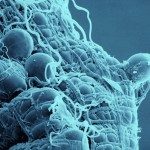Link to Pubmed [PMID] – 41137068
Link to DOI – 10.1186/s13071-025-07073-7
Parasit Vectors 2025 Oct; 18(1): 426
Aedes aegypti and Aedes albopictus are important vectors of arthropod-borne viruses (arboviruses) such as dengue, chikungunya, and Zika. Changes in land use have long been considered a factor in the emergence of infectious diseases; thus, it is imperative to look at how the diversity of viruses is also affected by land use.Viral metagenomics was used to determine the virome compositions of 260 Ae. aegypti and 75 Ae. albopictus collected from the three study sites in Los Baños, Laguna, Philippines, that differ in topography and land use transformations.The virome of Ae. aegypti and Ae. albopictus revealed virus sequences belonging to 12 different taxon groups, dominated by insect-specific viruses (ISVs) such as Phasi Charoen-like phasivirus (PCLV), Humaita Tubiacanga virus (HTV), and Wenzhou sobemo-like virus 4 (WSLV4). Both species were found to share the majority of identified viruses. Moreover, a relatively higher number of viral families were observed in sites that had undergone transformation from agriculture to bare and built-up areas, compared with a forest site.The findings of this study underscore the vast diversity of Ae. aegypti and Ae. albopictus viruses from the selected sites in the Philippines generated by viromics. Results also impact the understanding that land use may contribute to virus diversity. The prevalence of ISVs and nondetection of arboviruses in the virome composition of Ae. aegypti and Ae. albopictus were notable, suggesting further examination of the roles of ISVs in arbovirus transmission.

